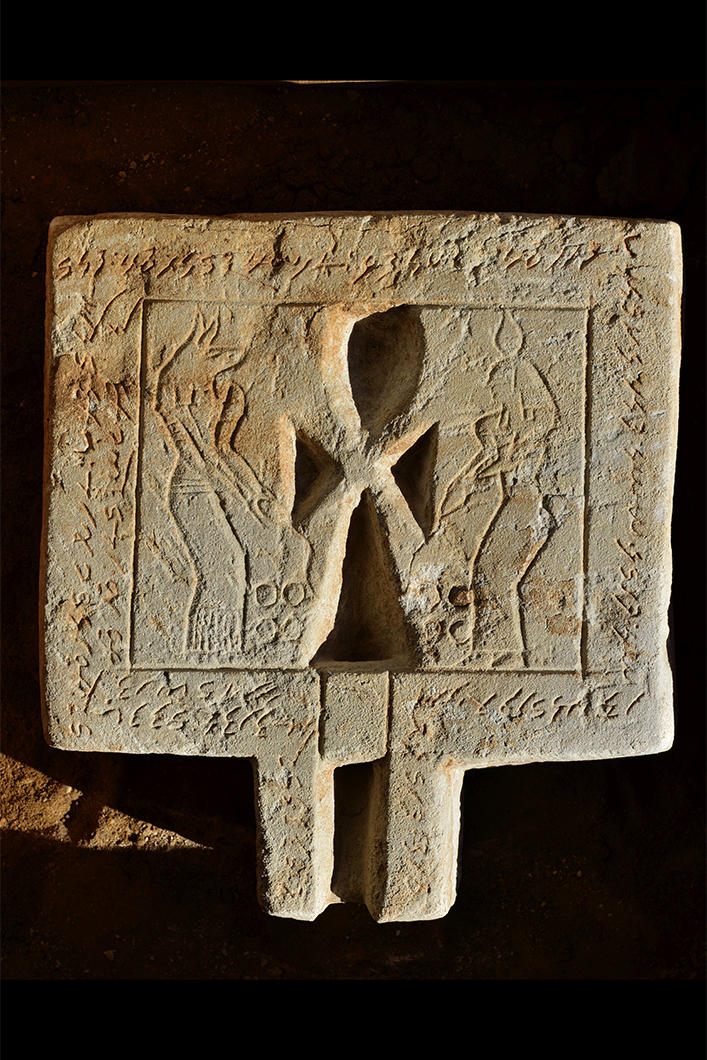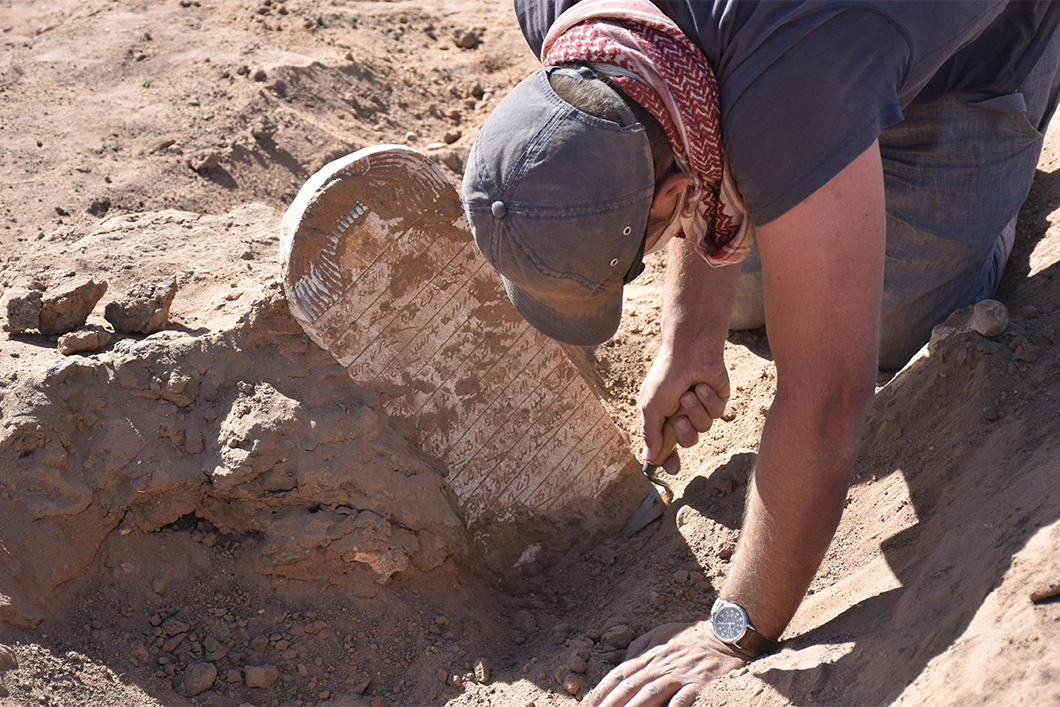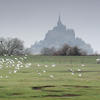You are here
A Glimpse of Ancient Africa
04.26.2018, by
The archeological site of Sedeinga, in northern Sudan, provides unprecedented evidence of the funeral rites of the kingdoms of Napata and Meroe that ruled this region from the seventh to fourth centuries BC. For nearly ten years, an international team led by CNRS and Sorbonne University researchers has been excavating the necropolis. Recent campaigns have brought to light one of the richest collections of texts in Meroitic, the oldest known language in sub-Saharan Africa.
Click here to read a press release about the excavation campaigns at Sedeinga, located in ancient Nubia, on the west bank of the Nile.

1
Slideshow mode
Aerial view of the necropolis site. This area of around four hectares includes the remains of about a hundred brick pyramids and of more than 200 tombs dating from the kingdoms of Napata and Meroe.
Mission archéologique de Sedeinga

2
Slideshow mode
To access the Meroitic graves, the team first had to carefully clear away the protective layer of sand surrounding each pyramid. A dozen researchers and around thirty Sudanese workers took part in the latest campaign.
Mission archéologique de Sedeinga

3
Slideshow mode
Several pyramids have an internal circular structure connected to the four corners of the building. According to archaeologists, this atypical type of architecture could be the result of superimposing traditional tumuli and pyramids.
Mission archéologique de Sedeinga

4
Slideshow mode
Stele in the name of a Lady Maliwarase, discovered in late 2017. It details the family ties of the deceased woman with various dignitaries of the kingdom of Meroe. Women had a central role in Meroitic society, embodying the prestige of the family and handing down its heritage.
Mission archéologique de Sedeinga

5
Slideshow mode
Lintel of the tomb of Adatalabe. According to the inscriptions, this woman belonged to an illustrious line that included in its ranks a royal prince who was a member of the reigning family of Meroe, the capital of the kingdom from the 4th century BC.
Mission archéologique de Sedeinga

6
Slideshow mode
The door jamb of the funeral chapel depicting Ma'at, the Egyptian goddess of order, justice and peace. To date, this is the first known representation of the goddess to have African features.
Mission archéologique de Sedeinga

7
Slideshow mode
Ceramics experts Romain David and Juliette Laroye seen here sorting potsherds to classify them by period and region of origin. A trading crossroads during Antiquity, the ancient Nubian city harbors numerous fragments of amphorae and earthenware jars from Egypt, Italy and even Gaul.
Mission archéologique de Sedeinga

8
Slideshow mode
An offering table from the early third century AD. The Egyptian cross of life, framed by representations of two deities, including the famous jackal-headed Anubis, has a lower arm and two lateral arms of triangular shape that are specific to the Meroitic style.
Mission archéologique de Sedeinga

9
Slideshow mode
The Ataqeloula stele, at the time of its discovery in November 2017. This ornate sandstone tablet, which is exceptionally well preserved, commemorates a woman of Meroitic high society.
Mission archéologique de Sedeinga

10
Slideshow mode
In this close-up of the Ataqeloula stele bluish lines can be seen. Chemical analyses have shown that it is Egyptian blue, a pigment obtained by mixing copper with calcium silicate that was widely used in ancient Egypt.
Mission archéologique de Sedeinga
Explore more
Society
Article
12/02/2025
Article
11/09/2025
Article
10/20/2025
Article
10/15/2025
Article
10/03/2025
Archaeology
Article
09/29/2025
Article
04/21/2025
Article
04/16/2025
Slideshow
11/08/2024
Article
10/31/2024
Archeology
Slideshow
11/24/2021
Article
10/17/2019
Article
03/08/2018
Article
01/17/2018
Article
02/21/2017
















